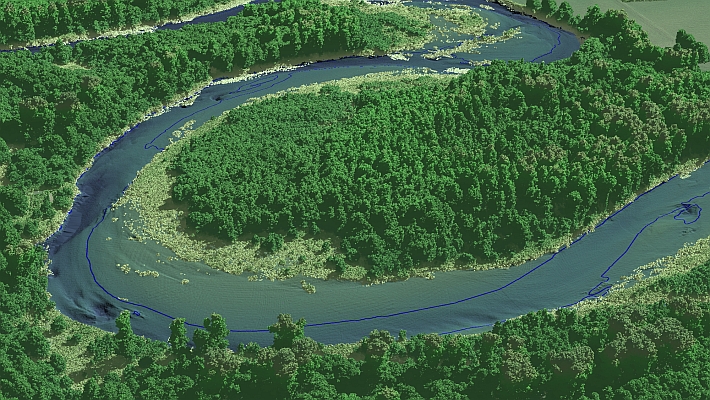Leica Geosystems redefined the word “support” when it assisted the California Highway Patrol’s (CHP) Multidisciplinary Accident Investigation Team (MAIT) at the recent collapse of a major San Francisco-area overpass. The CHP not only brought a Leica ScanStation 3D laser scanner with them to map the scene, but Leica Geosystems also responded by dispatching an application engineer to help collect and process the accident scene data.
The accident occurred in the early morning hours on April 29th, when a tanker truck carrying over 8,600 gallons of gasoline crashed on the “MacArthur Maze”, an approach to the San Francisco-Oakland Bay Bridge, igniting a 3000° F fire and causing the I-580 overpass to collapse onto an interstate below.
The CHP was on the scene within minutes of the incident and once it was safe, MAIT members set up the Leica ScanStation and systematically scanned the scene, collecting high-accuracy laser scan data from the ground to the top of the destroyed overpass. Leica Geosystems’ application engineer arrived on scene a short time after scanning began and was on hand to assist the CHP if needed in documenting the scene – a process that didn’t end until after midnight.
Recording forensic evidence to map the complex 3D-accident scene was further complicated by contractors demolishing the overpass as MAIT members were scanning the scene.
Lieutenant Dave Fox, MAIT’s Team Manager, said Leica Geosysetms’ ScanStation greatly increased their data-collection productivity and provided them with a much denser dataset than they could gather with conventional methods.
“The ScanStation enabled us to be very mobile and efficient while collecting very detailed data,” said Lt. Fox. “Typically we can acquire 500-1,000 points; with Leica Geosystems’ 3D laser we collected millions. We couldn’t have collected that kind of information without laser scanning.”
Leica ScanStation also enabled the CHP to collect data more safely, said Tony Grissim, Leica Geosystems’ Forensic Account Manager. “There were many areas at the scene where it was unsafe to walk. Since Leica’s ScanStation allows you to acquire data remotely, MAIT officers could document critical sections of the infrastructure from a safe distance.”
Grissim also facilitated the interest and support of Caltrans (California’s DOT) to use the high-accuracy scan data for its on-going analysis and reconstruction of the overpass failure. Once the CHP finished scanning the scene, Leica Geosystems’ application engineer acquired a copy of the data and hand-delivered it to Caltrans the following morning. In the following days Leica Geosystems continued its support and provided both Caltrans and the CHP with the technological resources and expertise they need for their complex investigation.
Caltrans intends to make the scan data available to the general public on the Web using Leica Geosystems’ free downloadable TruView point cloud viewer.






